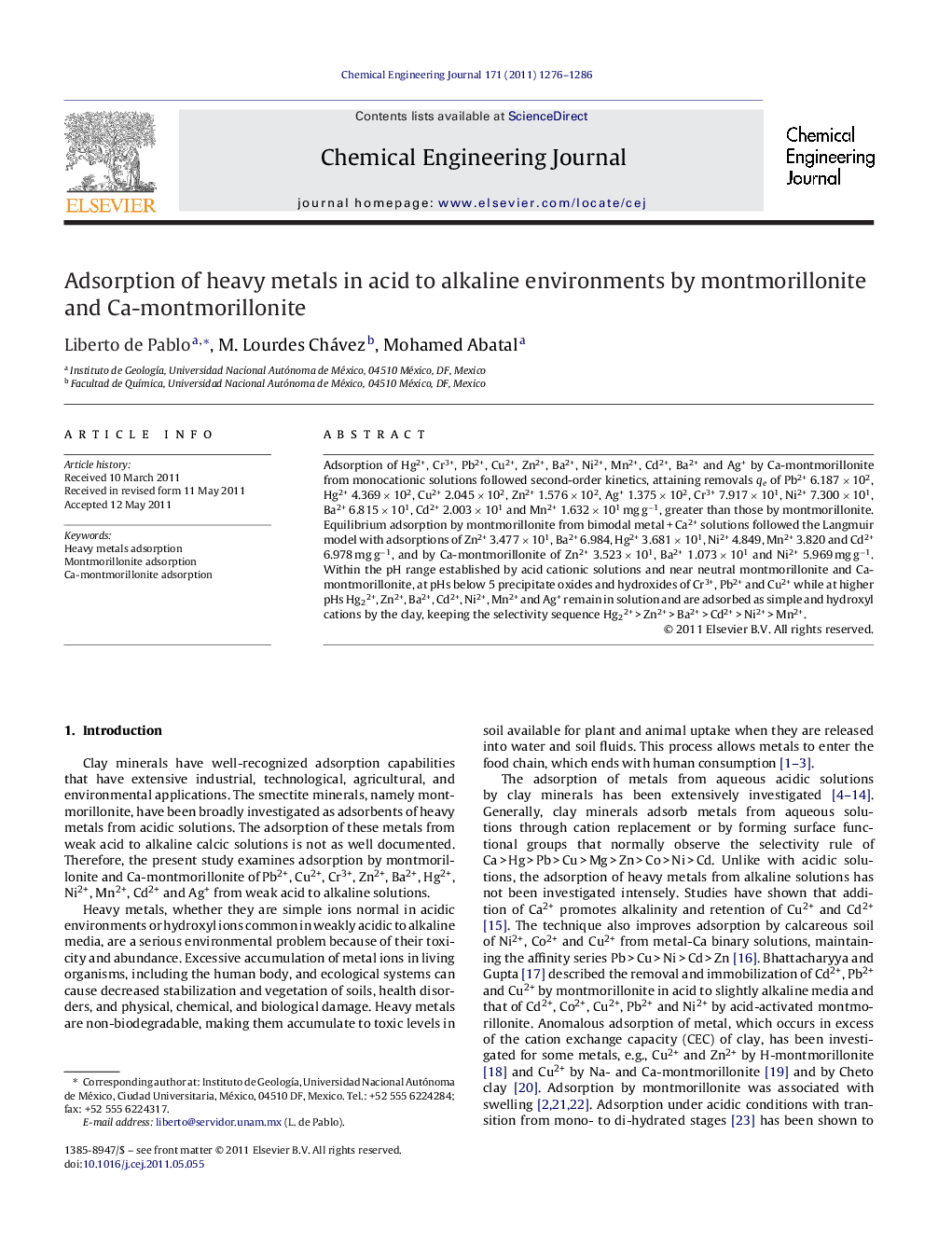| Article ID | Journal | Published Year | Pages | File Type |
|---|---|---|---|---|
| 150925 | Chemical Engineering Journal | 2011 | 11 Pages |
Adsorption of Hg2+, Cr3+, Pb2+, Cu2+, Zn2+, Ba2+, Ni2+, Mn2+, Cd2+, Ba2+ and Ag+ by Ca-montmorillonite from monocationic solutions followed second-order kinetics, attaining removals qe of Pb2+ 6.187 × 102, Hg2+ 4.369 × 102, Cu2+ 2.045 × 102, Zn2+ 1.576 × 102, Ag+ 1.375 × 102, Cr3+ 7.917 × 101, Ni2+ 7.300 × 101, Ba2+ 6.815 × 101, Cd2+ 2.003 × 101 and Mn2+ 1.632 × 101 mg g−1, greater than those by montmorillonite. Equilibrium adsorption by montmorillonite from bimodal metal + Ca2+ solutions followed the Langmuir model with adsorptions of Zn2+ 3.477 × 101, Ba2+ 6.984, Hg2+ 3.681 × 101, Ni2+ 4.849, Mn2+ 3.820 and Cd2+ 6.978 mg g−1, and by Ca-montmorillonite of Zn2+ 3.523 × 101, Ba2+ 1.073 × 101 and Ni2+ 5.969 mg g−1. Within the pH range established by acid cationic solutions and near neutral montmorillonite and Ca-montmorillonite, at pHs below 5 precipitate oxides and hydroxides of Cr3+, Pb2+ and Cu2+ while at higher pHs Hg22+, Zn2+, Ba2+, Cd2+, Ni2+, Mn2+ and Ag+ remain in solution and are adsorbed as simple and hydroxyl cations by the clay, keeping the selectivity sequence Hg22+ > Zn2+ > Ba2+ > Cd2+ > Ni2+ > Mn2+.
► Adsorption of heavy metals by Ca-montmorillonite, Hg > Zn > Ba > Cd > Ni > Mn. ► Adsorption versus cations speciation at pH 2–10 and precipitation pHs. ► Cr3+, Pb2+ and Cu2+ precipitate oxides or hydroxides at pH <5. ► Hg22+, Zn2+, Ba2+, Cd2+, Ni2+, Mn2+, Ag+ of precipitation pHs >5 are adsorbed. ► Divide at pH 5 separates cations that precipitate from cations that are adsorbed.
